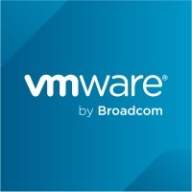

VMware Aria Operations and VMware Aria Automation compete in the enterprise IT solutions category. Based on comprehensive monitoring capabilities and predictive analytics, VMware Aria Operations appears to have the upper hand in monitoring and management. VMware Aria Automation excels with automation flexibility and integration capabilities, making it preferred for hybrid cloud environments.
Features: VMware Aria Operations provides performance monitoring, capacity planning, and real-time analytics. It offers a comprehensive view of virtual environments through integration with Log Insight and smart alerts for predictive issue resolution. VMware Aria Automation enables IT process automation with a self-service portal for VM provisioning, supports multi-cloud environments, and allows customization of automation workflows for efficient operation across diverse environments.
Room for Improvement: VMware Aria Operations could enhance its reporting capabilities, particularly in the export and manipulation of operational insights, and improve integration with existing infrastructures. VMware Aria Automation users would benefit from simplified deployment processes, better integration with non-VMware environments, and improved orchestration. Both products could benefit from more intuitive user interfaces and features that better align with user needs.
Ease of Deployment and Customer Service: Both solutions are typically deployed on-premises, with hybrid cloud implementations on the rise. While deployments can be straightforward, they often require significant expertise, highlighting the complexity of the solutions. Customer service from both products is highly rated, although some users report challenges in accessing knowledgeable support personnel.
Pricing and ROI: VMware Aria Operations users report favorable ROI due to improved operational efficiency and cost savings, despite a significant initial investment. VMware Aria Automation's higher pricing prompts concerns, especially for smaller enterprises, although its automation capabilities offer substantial ROI in large-scale environments. Licensing complexity is a noted factor affecting perceived value for both products.
We never had major issues to report or request support.
They remain in the top 25% of vendors.
I rate the customer service and support for VMware very highly, at nine out of ten.
I would rate technical support around eight or nine.
I consider VMware Aria Operations to be very scalable, earning a high rating of nine out of ten.
I find VMware Aria Operations to be quite scalable for my needs.
The solution is not very stable.
I have never experienced any downtime or lost connectivity.
I find the stability of VMware Aria Operations to be impressive, rated as a stable nine out of ten.
It operates for both of my products, however, as a product, it is complicated to integrate and automate with other products.
Customers have commented on the pricing issues, noting that doubling the price is not normal.
The primary issue is the pricing, which is very expensive for my company's budget.
Stability is a significant area that needs improvement as I experience frequent disconnections and interruptions in data collection.
We cannot afford to pay such a large fee.
VMware Aria Operations is considered overpriced.
The pricing and cost of VMware Aria Operations increased significantly after Broadcom acquired VMware.
It helps us automate the workflow of creating many VMs and the TensorFlow key method.
We have strong regulations for maintaining compliance and mitigating risks with this product.
It allows me to perform deep monitoring and logging of the entire environment, providing a quick alarm and warning system through email.
VMware Aria Operations has positively impacted incident response times, making it easier to solve problems with virtualization.
The costs are now exceeding my budget.
| Product | Market Share (%) |
|---|---|
| VMware Aria Operations | 4.9% |
| VMware Aria Automation | 7.1% |
| Other | 88.0% |


| Company Size | Count |
|---|---|
| Small Business | 32 |
| Midsize Enterprise | 24 |
| Large Enterprise | 130 |
| Company Size | Count |
|---|---|
| Small Business | 64 |
| Midsize Enterprise | 62 |
| Large Enterprise | 278 |
VMware Aria Automation is a cloud management tool that allows companies to simplify their cloud experience through a modern automation platform. The solution is designed to deliver self-service clouds, multi-cloud automation with governance, and DevOps-based security and infrastructure management. It helps organizations improve IT agility, efficiency, and productivity through its various features.
VMware Aria Automation has multiple use cases that include the following:
VMware Aria Automation Features
VMware Aria Automation has various features that allow users to easily perform operations. Some of the solution's capacities include:
VMware Aria Automation Benefits
VMware Aria Automation offers its users various benefits. Some of the biggest advantages that the solution brings to companies that utilize it include:
Reviews from Real Users
Awais J., CTO/CEO at a tech services company, likes VMware Aria Automation because it saves a lot of time, provides more visibility, and has extensive automation capabilities.
An IT consultant at a government rates VMware Aria Automation highly because the product gives you flexibility to analyze and consume resources.
VMware Aria Operations is a high-ranking virtualization management and cloud management tool that automates and simplifies IT management to the applications it supports. It achieves this through full-stack visibility from physical, virtual, and cloud infrastructure. The product allows users to enable self-driving IT operations management across private, hybrid, and multi-cloud environments. This is conducted with the unified operations platform that delivers continuous performance, capacity and cost optimization, and integrated compliance through artificial intelligence (AI) and machine learning (ML), and predictive analytics.
VMware Aria Operations Use Cases
VMware Aria Operations has several use cases, some of which include:
VMware Aria Operations Features
The product has various features which users can utilize. Several of the features that the 2022 version of VMware Aria Operations introduced include:
VMware Aria Operations Benefits
VMware Aria Operations brings various benefits to the organizations using it. Among them are the following:
Reviews from Real Users
Mohamed N., a tech lead VMware support engineer at a tech services company, appreciates VMware Aria Operations because it is easy to use, stable, and support is always available.
Mojtaba K., a senior system administrator at a comms service provider, values VMware Aria Operations due to the fact that its dashboards give you a glimpse of what is really going on in your virtualized environment.
We monitor all Cloud Management reviews to prevent fraudulent reviews and keep review quality high. We do not post reviews by company employees or direct competitors. We validate each review for authenticity via cross-reference with LinkedIn, and personal follow-up with the reviewer when necessary.